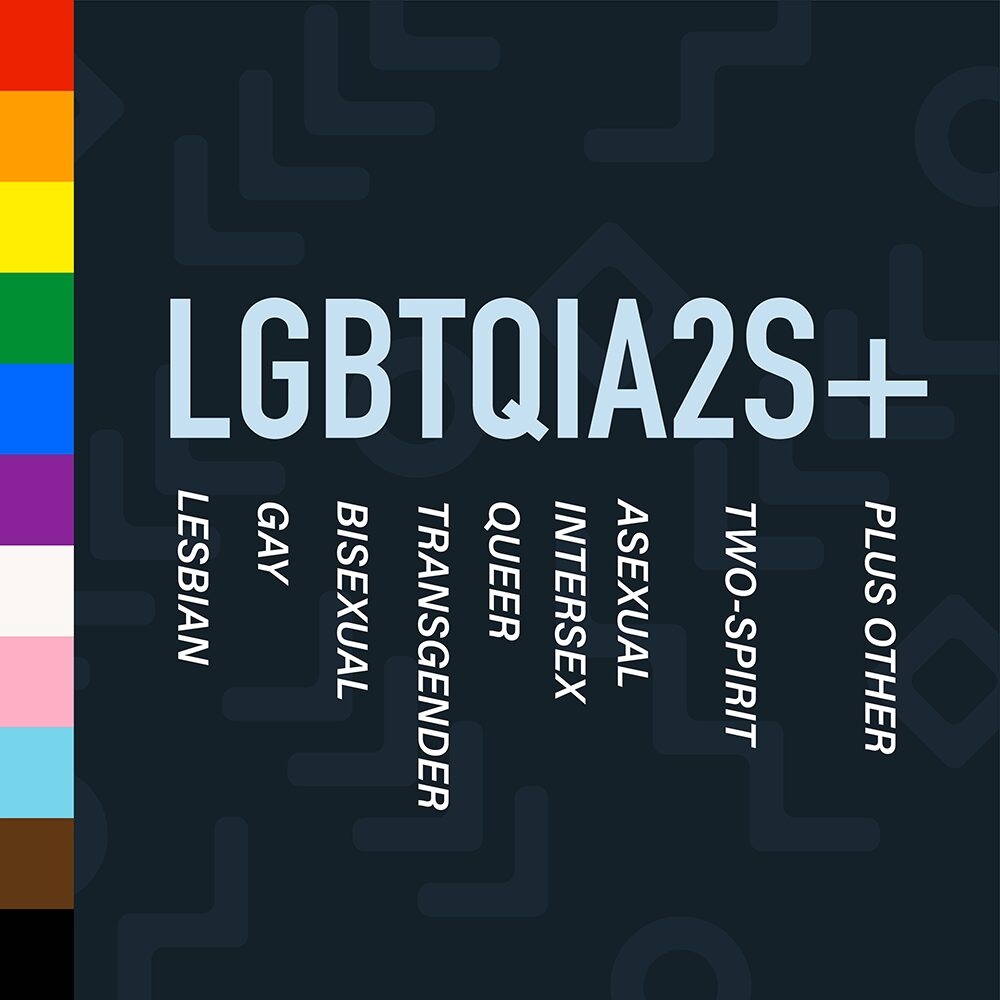Resources for Supporting the LGBTQIA2S+ Community

Here, we break down essential terms, provide key resources, and outline action items to advocate for equitable and affirming care. Join us in exploring these critical components to support and uplift the LGBTQIA2S+ community.
Breaking Down Key Terms
- AFAB (Assigned Female at Birth): Refers to individuals designated female at birth based on physical anatomy but may not identify as female.
- AMAB (Assigned Male at Birth): Refers to individuals designated male at birth based on physical anatomy but may not identify as male.
- Sex: Biological characteristics such as chromosomes, hormone levels, and reproductive/sexual anatomy. Sex is commonly categorized as male, female, or intersex.
- Sexuality: Describes an individual’s patterns of sexual attraction, behavior, and identity, including terms such as heterosexual, homosexual, bisexual, and asexual.
- Gender: Socially constructed roles, behaviors, and identities that societies consider appropriate for men, women, and gender-diverse individuals. Gender identity is a deeply felt sense of being a man, woman, neither, or something else.
- Everyone has a sex, sexuality, and a gender. These can be any combination of the identities listed above, all of which are normal and healthy.
What is Gender-Affirming Care?
The World Health Organization defines gender-affirming care, as “a range of social, psychological, behavioral, and medical interventions designed to support and affirm an individual’s gender identity” when it conflicts with the sex they were assigned at birth.
Gender-affirming care can include hormone replacement therapy (HRT), cosmetic surgical procedures, haircuts, stopping menstruation, clothing changes, etc.
Gender-affirming care is safe, lifesaving health care that allows for transgender and gender-diverse people to be able to live their full and authentic lives.
Why is gender-affirming care necessary? What makes it “life-saving health care”?
Gender-affirming care is life-saving because it respects and validates the identities of transgender and non-binary individuals. Providing care that permits people to align their physical appearance with their gender identity is not only a matter of personal autonomy but also crucial for their social and psychological well-being. As providers, when we offer gender-affirming care, we acknowledge and support the individual’s right to live authentically. This validation and respect can be life-saving, as it fosters a sense of acceptance and belonging, reducing the risk of self-harm and suicide.
Gender-affirming care is also about the sense of safety and belonging queer and trans patients experience when connecting with a provider. Cultivating a safe, inclusive environment for queer and trans patients can look like:
- Trusting patients to make decisions about their bodies, families, and health.
- Using the correct gender pronouns and names to refer to patients, both when interacting with them and in medical records. Ensuring that your colleges do the same.
- Using inclusive language to describe people who can have children; birthing people, parents, pregnant people, people capable of getting pregnant, patients, community members, people seeking care
- Providing queer and trans patients with accurate information about gender-affirming care and abortion.
Visit FOLX Health to get access to LGBTQIA+ specialized clinical care, resources, and community.
What is “TransMisogynoir”?
Transmisogynoir refers to the intersectional systemic discrimination faced by Black transgender women, femmes, transmasculine AFAB folx, and non-binary trans people. Transmisogynoir combines elements of transphobia, misogyny, and racism.
Black transmasculine AFAB people and non-binary people experience disproportionately high rates of violence, unemployment, housing instability, and barriers to gender-affirming care, contraceptives, and abortions.
Transgender men and transmasculine non-binary people can and do get pregnant and have children. While they may not explicitly identify as women, they are subject to transmisogynoir when seeking abortions.
Black trans women and femmes experience disproportionately high rates of violence, unemployment, housing instability, and barriers to gender-affirming care and reproductive services. Although trans women are not navigating the additional intersection of barriers to abortion care, their unique intersectional experience of transmisogynoir is directly linked to the health care discriminations they face.
This compounded discrimination for all Black trans women, femmes, transmasculine, nonbinary folks results in severe health disparities, necessitating targeted interventions to support the reproductive health and well-being of these communities.
What can “TransMisogynoir” look like in a clinical setting?
- Misgendering a patient.
- “Deadnaming” a patient.
- If misgendering or deadnaming a patient, not apologizing or correcting yourself.
- Assuming a patient’s sexuality and/or sexual activities based on their gender expression and/or genitals.
- Making problematic assumptions about a patient based on their gender expression and/or genitals.
- Denying a patient care based on their gender identity and/or expression.
- Criminalizing a Black, queer patient’s behavior in medical records.
Solutions to Enhance Care for LGBTQIA2S+ People

- Policy Advocacy: Supporting policies that promote equity and oppose discrimination, such as inclusive abortion access, coverage for gender-affirming care, and protection against health care discrimination based on sexual orientation and gender identity.
- Training and Education: Developing and implementing specialized training for abortion providers on LGBTQIA2S+ health needs, cultural competency, and inclusive care practices to ensure that all patients receive compassionate, evidence-based, patient-centered care.
- Community Engagement: Establishing and maintaining trusting relationships with organizations representing and serving LGBTQIA2S+ community members. Community representatives are included in the planning and implementation of research, policies, and programs.
- Access to Care: By expanding access to abortion through telehealth options, and ensuring that Federally Qualified Health Centers are equipped with the staff, equipment, and medications to meet the needs of LGBTQIA2S+ patients, we can improve community health outcomes.
Inclusive Care Practices
As providers, we are responsible for acknowledging and addressing the unique needs of LGBTQIA2S+ patients. There are many things we can do to ensure that queer and trans patients feel seen, validated, and cared for when seeking abortions or other health care services.
- Culturally Competent Care: Providing inclusive, culturally competent health care that recognizes and respects the diverse backgrounds and experiences of LGBTQIA2S+ patients.
- Affirming Pronouns and Names: By using the correct, affirming gender pronouns and names, and ensuring that medical records accurately depict our patients, we can promote a safer, more inclusive environment.
- Affirming medical language: Ask patients about the language they use to discuss their body parts, sexual behavior, and identities. Respect and reflect the language used.
- Patient-Centered Communication: By asking open-ended questions and trusting our patients to share their needs and experiences, we can cultivate a supportive environment where our patients feel safe to authentically be themselves, and disclose their health concerns.
Are you a member of our LTA network? If so, contact us for access to our Queer Justice Talking Points. If not, learn more about how to join!
Thank you Dr. Anita Hoang and Dr. Janis Sethness for your support and review of these resources.

